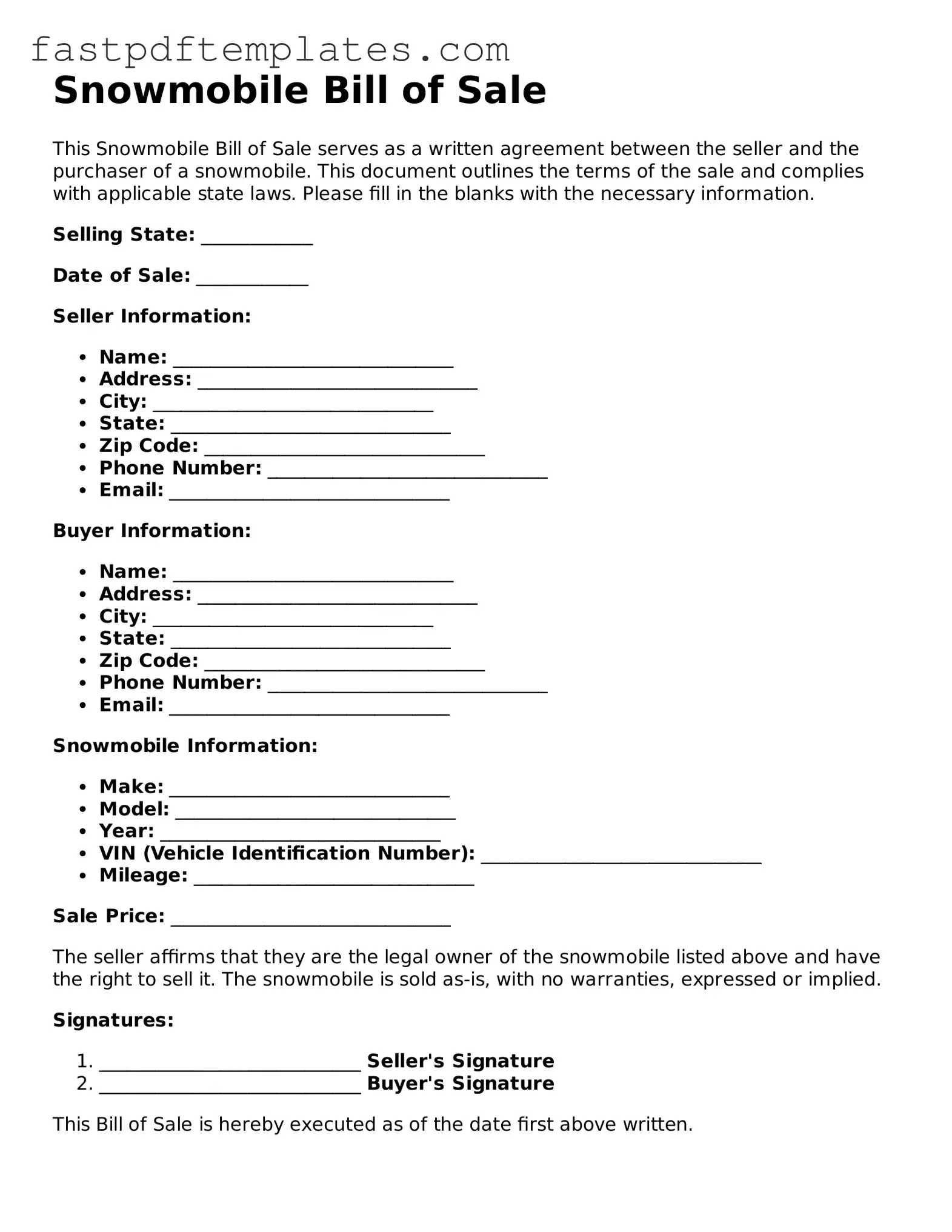Snowmobile Bill of Sale
This Snowmobile Bill of Sale serves as a written agreement between the seller and the purchaser of a snowmobile. This document outlines the terms of the sale and complies with applicable state laws. Please fill in the blanks with the necessary information.
Selling State: ____________
Date of Sale: ____________
Seller Information:
- Name: ______________________________
- Address: ______________________________
- City: ______________________________
- State: ______________________________
- Zip Code: ______________________________
- Phone Number: ______________________________
- Email: ______________________________
Buyer Information:
- Name: ______________________________
- Address: ______________________________
- City: ______________________________
- State: ______________________________
- Zip Code: ______________________________
- Phone Number: ______________________________
- Email: ______________________________
Snowmobile Information:
- Make: ______________________________
- Model: ______________________________
- Year: ______________________________
- VIN (Vehicle Identification Number): ______________________________
- Mileage: ______________________________
Sale Price: ______________________________
The seller affirms that they are the legal owner of the snowmobile listed above and have the right to sell it. The snowmobile is sold as-is, with no warranties, expressed or implied.
Signatures:
- ____________________________ Seller's Signature
- ____________________________ Buyer's Signature
This Bill of Sale is hereby executed as of the date first above written.
